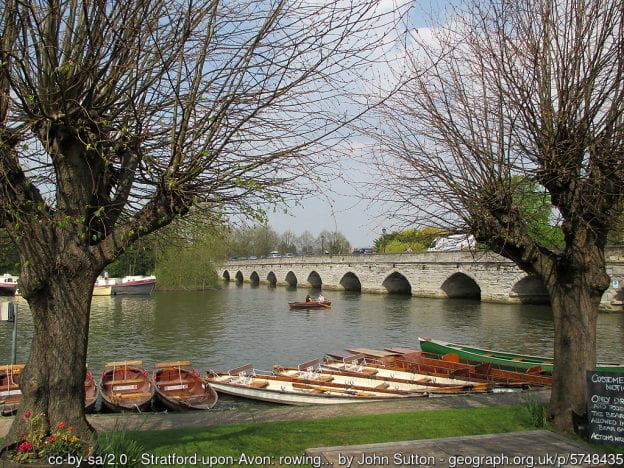Here is what looks like a YB-Plea Roll match. It took some finding, in a long roll with lots of very dull, terse, entries in writing which is on the turn towards (shudder) early modern style (a little enlivened, it is true, by some great footnote doodles). The case is Richard Wynslowe v. John Cleypole (1489),[i] a Common Pleas trespass case which starts off in fairly banal fashion, but gets quite intriguing, quite soon.
We are in Leicestershire, and John Cleypole, of Halloughton, gentleman, is answering a case of trespass. It was alleged that, on 4th March 1488 he had broken into the house of Richard Wynslowe, clerk, of Halloughton, and assaulted and threatened his servants, Robert Tyrlyngton and Isabelle his wife; whose services Richard lost for a month, which, so he claimed, caused him loss of 10 marks). Thus far, this is fairly common-or-garden stuff. The interesting bit comes with the defence argument.
John denied most of the allegations, except for the part about entering Richard’s property. As far as this was concerned, however, he argued that Richard should not succeed in bringing this action, because his entry had been to arrest a felony suspect. He explained that Isabelle was suspected of poisoning one Thomas Shepherd at Houghton. According to John, ‘long before’ the day of the alleged trespass, Thomas had been poisoned (intoxicatus), and Thomas, languishing on his deathbed at Halloughton, had contacted John and had told him, openly, that Isabelle had given him a poisoned draught (potum venenosum), of which he died, before the alleged trespass, at Uppingham in Rutland. John said that, after that, suspecting Isabelle of causing the death, he had gone to Richard’s property, had entered to arrest Isabelle, and had then taken her to the king’s gaol of Leicester. The thrust of his argument was that this was not the trespass alleged by Richard, and Richard should not succeed.
There are small variations in the Year Book. For example, the report simplifies the facts, making the allegation that it was the plaintiff (Richard) who was suspected of the poisoning, rather than a servant of his. Both Robert and Isabelle disappear from view. In addition, there is some difference in the way the two sources deal with the way the poisoning allegation was supposed to have reached John. The YB describes this as coming via ‘common voice and fame’. There seems to have been some dispute as to whether this was sufficient (perhaps leading to the version we see in the plea roll, with the idea of a specific report by Thomas to John).
The YB deals in more detail than does the PR with the question of authority. In the YB there is discussion of the fact that John was acting on the orders of the sheriff, which does not appear in the PR. The YB shows discussion of whether John should be allowed to interpose the sheriff and his command here, and apparently it was resolved that he needed to remove the sheriff from the equation, basing his conduct on his own suspicion of Isabelle’s felony. There is also discussion of the way in which the poisoning allegation itself should be handled: was it acceptable to use it as a basis for John’s conduct, without allowing an opportunity for it to be denied? Here, discussion in the YB suffers from its simplification: having treated the plaintiff and the alleged poisoner as identical, this distorts what appears to have been the true situation – a justification of conduct complained of by X, on the ground of a serious allegation against Y. Basing themselves on their simplified model of the case, so the YB tells us, ‘All the Court’ thought that John ought to have put the poisoning allegation in such a way that Richard could have traversed it: he had to be given the opportunity to say it simply did not happen. It is not clear, though, that they agreed on what this meant: did it need to be amenable to a traverse under normal pleading rules within this case, or was it enough that there was a theoretical possibility of bringing a separate writ de odio et atia, as one judge was reported to have said?
The PR entry ends with Richard’s final gambit. Careful not to admit that Thomas had been poisoned as John alleged, he made the argument that Thomas did not notify John that Isabelle gave him the potum venenosum, as John had said, and that John had trespassed in the way he, Richard, had stated. This was the issue which went to the jury.
So what?
In terms of Legal History, and the development of law, I think there are a couple of Interesting points. I have noted above some of the differences between YB and PR. Looking at them together gives snapshots of the process of formulating issues, and the way in which medieval lawyers worked by simplifying complex facts – sometimes, we might think, over-simplifying them.
It is worth thinking about what all of this reveals about attitudes to ‘policing’ and (massive anachronism alert …) ‘civil liberties’. In relation to the arrest power which features in John’s defence, the thinking does not seem to be that a person could not arrest another on the (to us, nebulous) ‘fame of the country’, even though, in the end, John conveniently seems to find that there was actually a direct communication to him from the languishing poison victim, but that, for ‘common fame’ to be an acceptable basis for arrest, defeating a claim of trespass, the person doing the arresting had to take responsibility, as an ordinary citizen, rather than shielding behind the authority of the sheriff. We see, I think, co-existing ideas of community and official responsibility, and perhaps some tension between them. Richard certainly decided to proceed with caution, in framing a narrow issue based on John’s claim of actual notification by the deceased.
There are, of course, questions about the real story, and how it ended. It may be possible to find out whether Isabelle was convicted of the poisoning, and it may be possible to find an ending for this trespass case. I will certainly be looking. Other things may well remain murky – in particular, why was Richard so keen to protect an alleged poisoner, what was the role and relevance of Robert, and was there some other ‘beef’ (poisoned or otherwise) between Richard and John lying behind this?
GS
6/3/2021
[i] CP 40/910 m. 340 (IMG 665) http://aalt.law.uh.edu/AALT3/H7/CP40no910/aCP40no910fronts/IMG_0665.htm; Seipp 1489.041; BU Law | Our Faculty | Scholarship | Legal History: The Year Books : Report #1489.041



